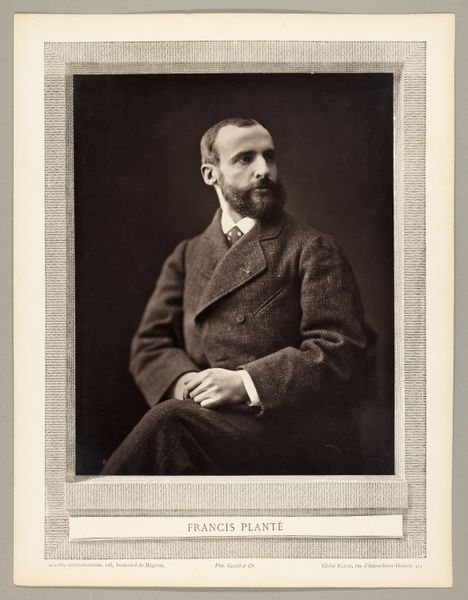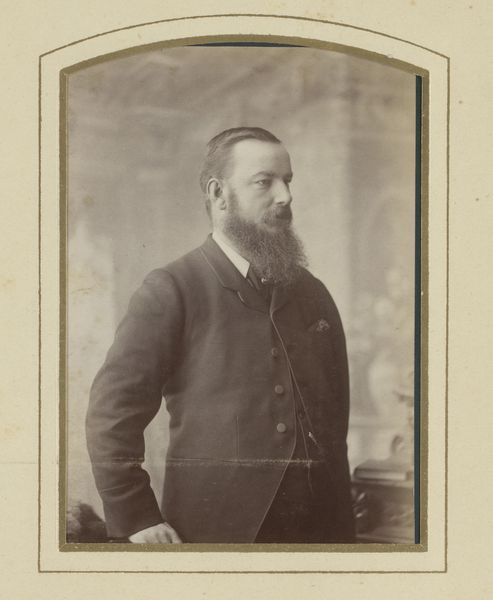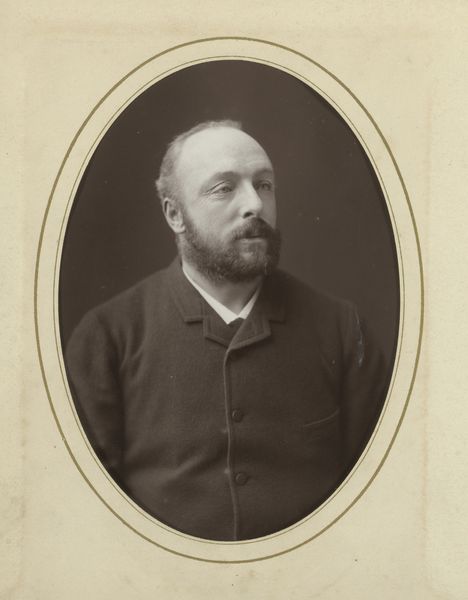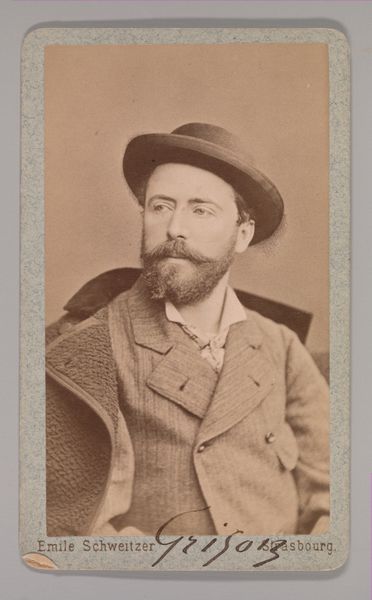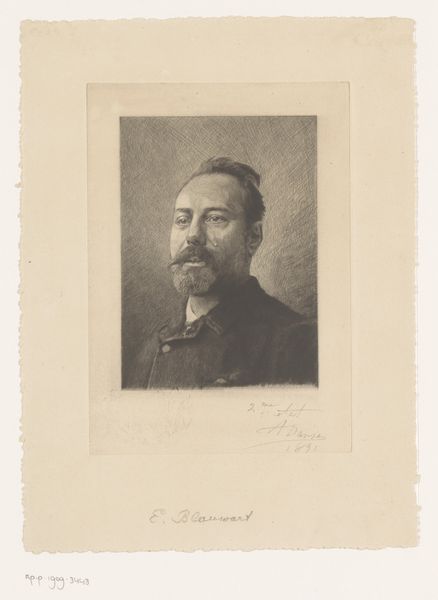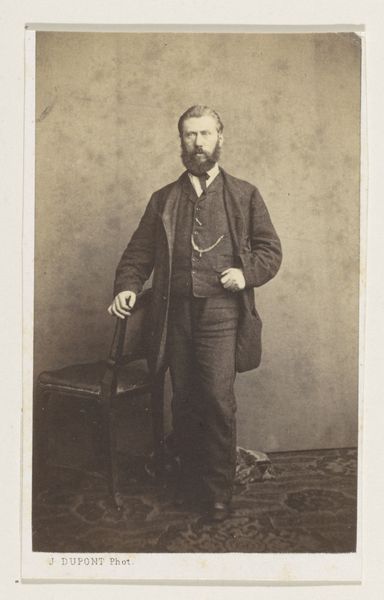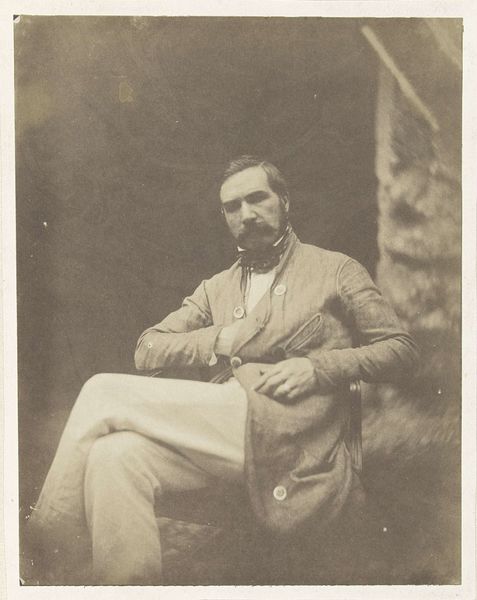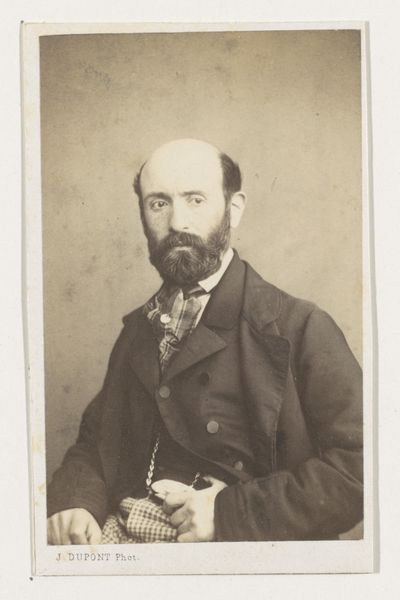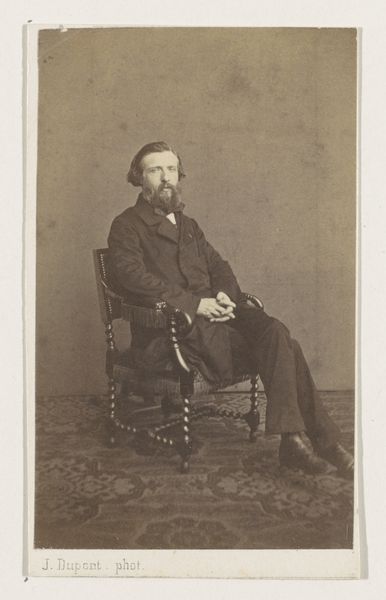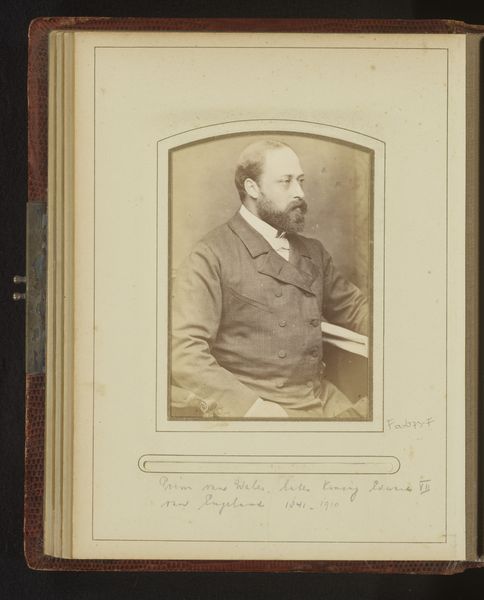
Dimensions: 22.6 x 16.8 cm (8 7/8 x 6 5/8 in.)
Copyright: Public Domain
Curator: This captivating gelatin silver print, taken between 1849 and 1855, is entitled *Alfred Thompson Gobert*. The photographer is Louis-Rémy Robert. Editor: It has an incredible melancholic air, don’t you think? A sort of restrained, almost sorrowful expression on the man’s face amidst a hazy background. The tonal range feels quite limited, muted, drawing me into Gobert’s interiority. Curator: Interesting you say that because, consider the actual mechanics involved in achieving that particular tonality. The specific mix of silver halides in the emulsion, the exposure time relative to available light, the temperature of the developing solutions. This all contributed to that muted aesthetic we see, which really contrasts with contemporary glossy photography. Editor: Absolutely, but those technical choices were also influenced by aesthetic and cultural contexts. Consider the prevailing attitudes toward masculinity during this period. A subdued emotional presentation was often deemed more acceptable, more dignified, particularly for the bourgeois class, possibly reflected in Gobert’s portrait here. Curator: Yes, but beyond the sitter, how did Louis-Rémy Robert's choice of the gelatin silver print medium elevate photography from mere documentation to a form capable of producing “fine art” prints? Before the accessibility afforded by mass production, this process necessitated both specialized skills and significant resources. What choices dictated Gobert's pose, how conscious the presentation to appeal or conform with social tastes? Editor: Right, and we also have to acknowledge the socio-economic implications. Early photography, like this print, was an expensive and specialized practice. So, who had access, and whose stories were being documented versus erased from the visual record? This is Gobert presented through a specific gaze, a particular historical power dynamic at play, it seems. Curator: Indeed. So, if we are accounting for that original material production of the photographic paper, developing chemicals and their availability… can this inform further what meanings we are extracting from it? This would affect cost and therefore access to making such work. Editor: Considering those aspects in parallel gives depth and new ways of comprehending both Louis-Rémy Robert's practice and its historical context. This one image encapsulates so much! Curator: Agreed. Analyzing the intersections of art production with historical and material realities always adds considerable nuance to any reading of visual works.
Comments
No comments
Be the first to comment and join the conversation on the ultimate creative platform.
